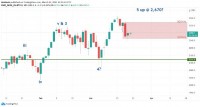
Duncan McKenzie
The total value of pension assets managed globally rose by an estimated 8% to $31.1 trillion in 2010, building on an 11% upturn in 2009, but have still to recover the high of $31.9 trillion reached in 2007. The Pension Markets report from TheCityUK, the independent membership body promoting the UK financial and related professional services industry, notes that UK defined benefit (DB) schemes remain focused on derisking. This is despite the improved funding position for UK pension schemes: recovering equity markets contributed to the record £201bn deficit of DB pension schemes in 2009 being turned into a £22bn surplus in 2010. Concern about long-term growth in liabilities linked to rising life expectancy is the prime driver of derisking. A central strategy has been closure of DB schemes to new members: employees in open DB schemes have fallen by three quarters from 4.1m in 2000 to 1.0m in 2009. The share of UK DB private sector schemes remaining open to new members has declined to 21% in 2010 from 35% in 2006. Other means of derisking include lowering allocation to equities, down to 42% from 75% over the past ten years. Some companies are transferring responsibility for DB pension schemes to insurance companies: the insurance buyout market was worth around £7bn in 2008 and 2009. Costs have also been reduced with contributions to DC schemes, at 9% of salary, running at less than half the 20% of salary to open DB schemes. The UK government has been legislating to put financing of pensions on a sustainable basis. The state pension age is being raised to improve affordability and the default retirement age is being removed to facilitate ongoing employment for those who wish to keep working. The CPI is to replace the RPI as the legal minimum for pension indexation, reducing the cost to employers of DB commitments and decreasing pensions of DB beneficiaries. The National Employment Savings Trust (NEST) is being introduced to encourage a broader spread of pension provision amongst those on low and middle incomes. As a first step in reviewing the financing of public sector pensions the Hutton Commission has established a set of principles against which long-term options for reform should be judged. Duncan McKenzie, Head of Research at TheCityUK, said: "The real rate of return on UK pension funds was 7.6% in 2010, building on the 15.7% rise in 2009. But four years of negative returns over the past decade mean that real returns during that period have averaged only 1.7% a year, well below the long-term average real return of 4.3% a year over the past half century." In recent years, more people over the age of 65 have been supplementing their pension by staying in work. UK employment amongst this age group was up by 74,000 in the first 9 months of 2010, and in total has virtually doubled from 426,000 in 2000 to 844,000 in September 2010.
The UK, with pension assets totalling $2.5 trillion, remains the second largest market, accounting for 9% of total assets worldwide. UK assets are only exceeded by the dominant US market where assets of $18.1 trillion make up nearly two thirds of the global total...Full press release:Source |
Industry Updates
Global pension assets up 8% in 2010 with 7.6% real return on UK pension funds
Tuesday, March 01, 2011
|
|





 RSS
RSS







